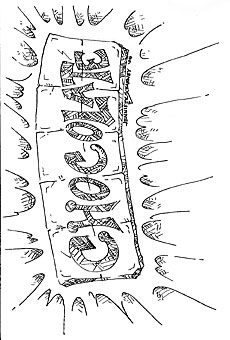
Illustration by Jennifer Kearney
|
|
Arizona Daily Wildcat
Friday, November 18, 2005
Print this
Things you've always never wanted to know
The lyricist of the song "Keep the Home Fires Burning," Lena Gilbert Ford, burned to death in her home.
The South Pole is actually considered a desert environment, averaging about the same amount of monthly rainfall as the Sahara Desert.
Someone who faces the glare of publicity may be said to be in the limelight. American chemist Robert Hare discovered that a blowpipe flame acting upon a block of calcium oxide - lime - produces a brilliant white light that could be used to illuminate theater stages.
U.S. experts say there are too few honeybees nationwide. This is cause for alarm, as honeybees are the natural pollinators of all vine crops as well as certain nuts, some citrus and backyard apples. Up to 90 percent of feral bees have been killed off in the northeast U.S.
An ostrich may weigh as much as 300 pounds. Its intestinal tract is 45 feet long.
Before his debut on "Magnum, P.I.," Tom Selleck appeared twice on "The Dating Game," but didn't get picked either time.
Shangri-La, the presidential hideaway near Thurmont, Md., was renamed Camp David in honor of President Eisenhower's father and grandson on May 22, 1953.
By the end of the Civil War, between one-third and one-half of all U.S. paper currency in circulation was counterfeit. This served as the catalyst behind the creation of the U.S. Secret Service. On July 5, 1865, the Secret Service was created under the U.S. Treasury Department. In less than a decade, counterfeiting was sharply reduced.
Chocolate, as a drink, was a favorite of Montezuma, emperor of the Aztecs. In the early 1500s, Montezuma drank as much as 50 glasses of chocolate every day. Hernando Cortez, the Spanish conquistador, brought the drink back to Spain in 1529. It remained a favorite of the Spanish royalty for many years before becoming consumed widely throughout Europe. Three centuries later, chocolate was first used as a nonliquid confection in England.
According to U.S. Treasury Bureau of Engraving and Printing, there were more than 10 billion pennies minted in the U.S. in 1998. The actual number of coins produced, by denomination, was as follows: pennies, 10,257,400,000; nickels, 1,323,672,000; dimes, 2,335,300,000; quarters, 1,867,400,000; and half dollars, 30,710,000.
Write a Letter to the Editor
|
